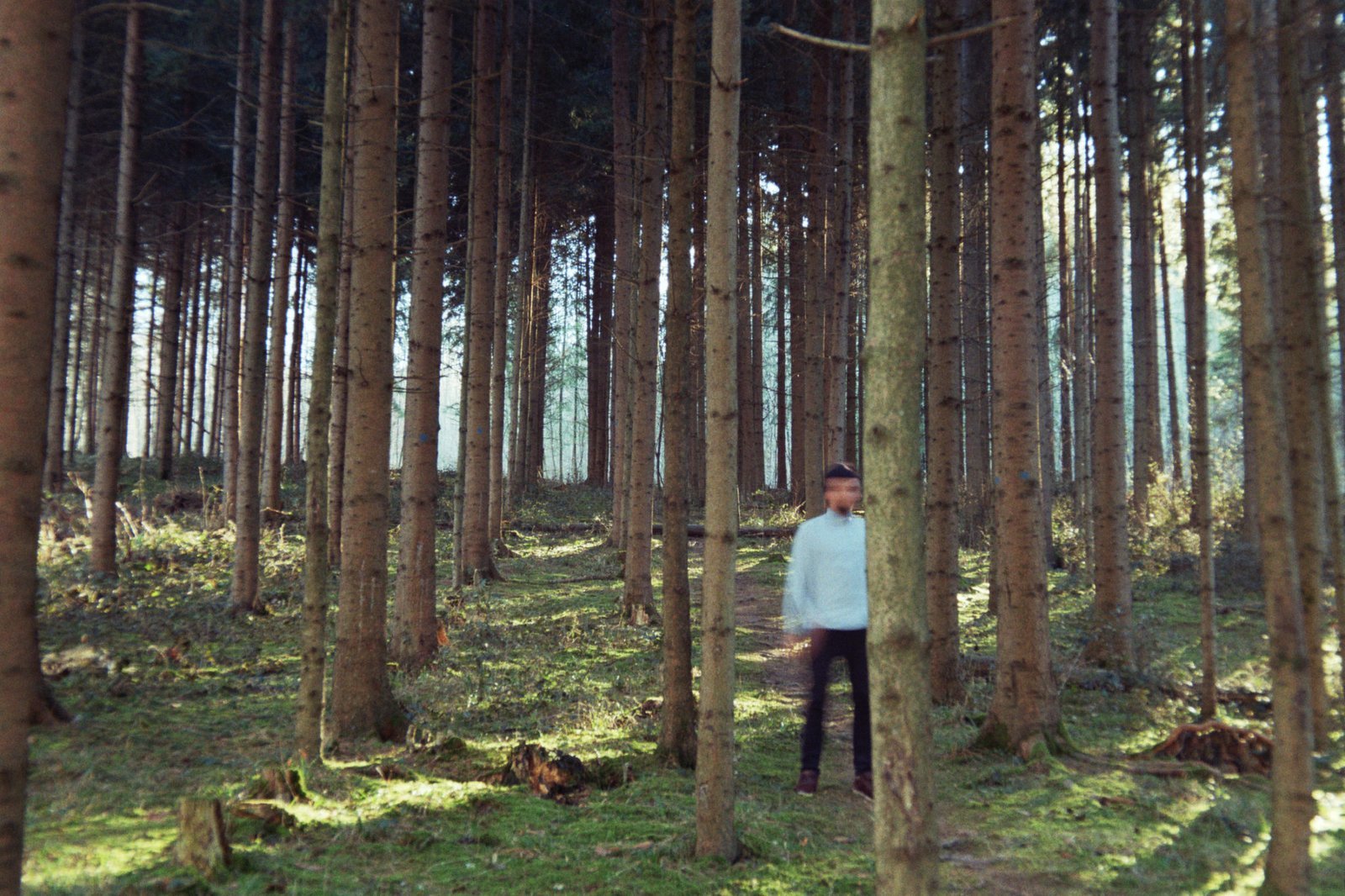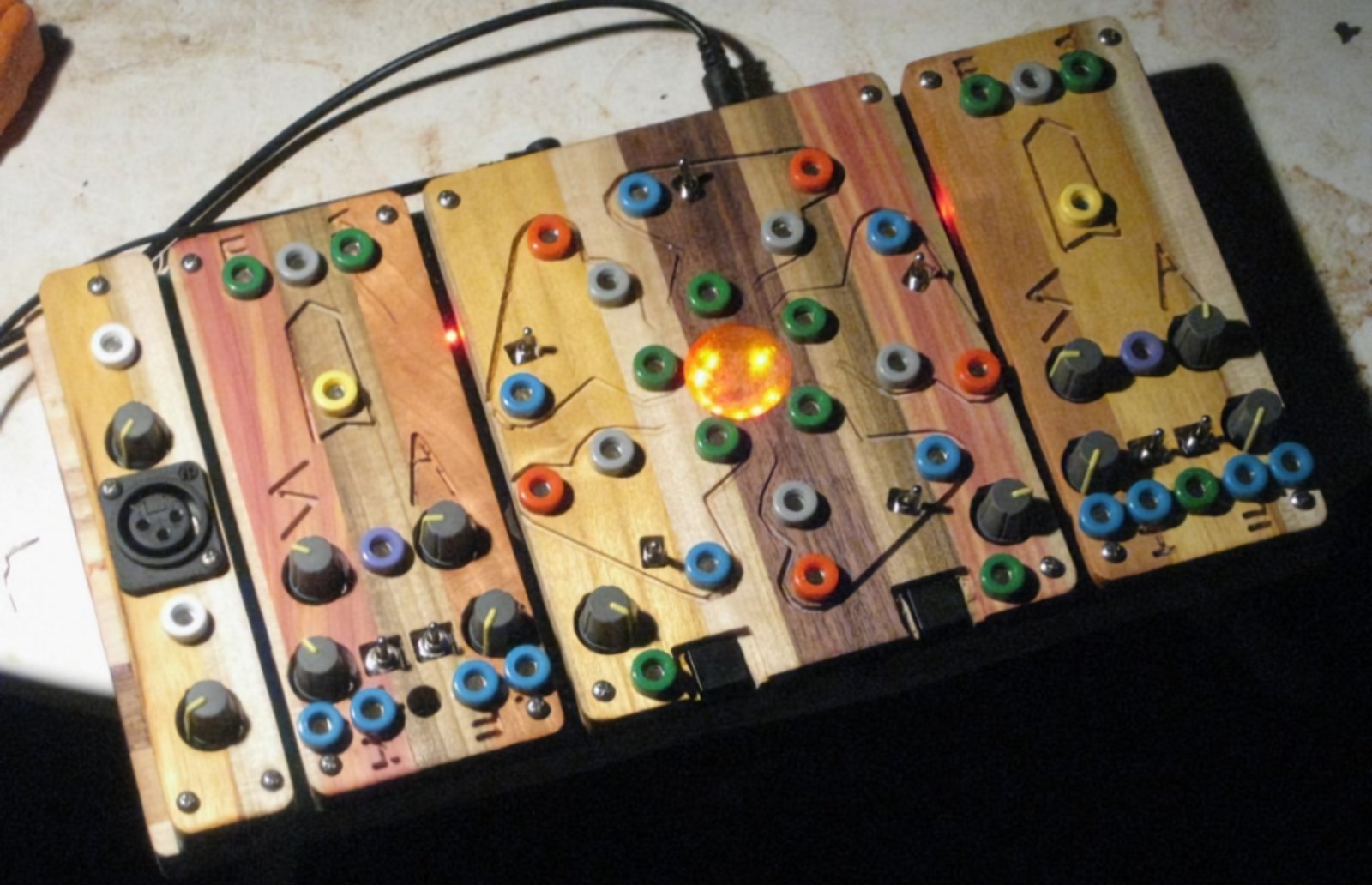
Long before Brian Eno dreamed-up the term ambient music, there was “Furniture Music.” Coined by composer Erik Satie in 1917, “Furniture Music” intends to “make a contribution to life in the same way as a private conversation, a painting in a gallery, or the chair in which you may or may not be seated” (Satie’s words).
There’s a story of the debut of “Furniture Music” (or more correctly “Furnishing Music” — ‘musique d’ameublement’). Satie performed it during the intermission of a play, and the audience was encouraged to mill about as they usually would during a theater break. Instead, and much to Satie’s frustration, the audience stayed seated and listened.
Marc Méan is a Zürich-based musician who has found inspiration in Satie’s “Furniture Music” 100+ years later. It informs his fascinating album Collage, a set — and cassette — of two twenty-minute compositions that vibrate from ethereal soundscapes to lightly percussive sound design. It’s experimental in sound and process and, though “Furniture Music” serves as a launching pad, like Satie’s intermission music Collage leaves the listener more attentive than passive.
“[Satie’s] approach fascinated me,” Marc says. “Before that, I was playing mostly jazz and improvised music, which required me to be active and personally involved as a listener and as a performer. It’s music where you have to be highly reactive to everything around you, where everything happens fast, where one prefers evolution to repetition. I wanted to find an approach to music where I could slow things down, where I could stretch time, be more passive, find simplicity.”
The inspiration came through the acquisition of an unusual electronic instrument. Marc explains, “It all began when I acquired Peter Blasser’s instrument the Ciat-Lonbarde Cocoquantus. It is a weird synthesizer-sampler that has a life of its own.”
Originating in Portland and partly hand-crafted out of wood, the Cocoquantus is a sampler combined with looping delays and multiple analog synthesizer engines for modulation. Blasser himself describes the Cocoquantus as “not for the faint of heart: but once you speak its language, nothing else is quite the same.”

“Peter Blasser’s instruments don’t come with manuals,” Marc says. “Nothing is labeled on the instrument, so you have to explore it yourself. And I have never been someone who likes to practice for the sake of practicing. I always need to work in a musical context to learn something new. So while taming this new instrument, I recorded all my experiments.”
The process developed into a creative game (or, as I like to say, a tiny accident). Marc explains: “I like the idea of organized chaos, of controlled randomness in my work. The more I surprise myself in the creative process, the more interesting the music will be to me afterward. In the end, I felt that the material had a strong unity because of the gear I used. The Cocoquantus has such a strong personality that it binds the recordings together.” These exploratory pieces were combined to form the backbone of Collage.
The resulting album is a lovely and imaginative trek through experimental ambiance. There are haunting piano moments, teasing through snatches of melody transmitted from a distance. Distinctively electronic antics appear, manipulated bleeps and clicks that soon give way to luminous passages. For all of its digital manipulation, Collage is warm and organic sounding, and the two twenty-minute stitched-together compositions don’t sound stitched-together at all.
Though there are elements of ambient ‘drone’ music, Collage‘s pieces develop and subtly change, sometimes offering surprises for the listener. “I can’t help myself but to have things evolve and have some drama,” Marc says. “The two sides are designed as a response to each other. One doesn’t need to listen to both sides back-to-back, but I would recommend listening to each in its entirety.”
I get this impression even as I listen to Collage as a digital stream on Bandcamp. The nature of the tracks, their grainy sound, and 20-minute lengths make Collage imaginable in a cassette format. Marc embraces Collage on cassette: “I like when music can be tangible; when music pairs with an object. It grounds things into a reality in this era where everything is virtual. Also, analog tape was used during the recording to transform and give color to certain elements. So for me, it makes sense that Collage is available on a physical medium.”
Thus Neologist Productions has issued Collage on cassette, limited to 30 copies. The artwork is beautiful and visually fits the tone of the music. And, as Marc points out, the cassette may be the best way to experience Collage: “Because of the physicality of the cassette the listening experience is different. Cassettes sound different than a digital medium. Cassettes are lo-fi in comparison, they wobble a bit, they age, they are imperfect in the best way possible.”
Listen to Collage on various streaming platforms or on Bandcamp (where you can also purchase the limited edition cassette).
Thanks for this — Marc Mean is pretty much exactly where I live now — and I’m headed to Zurich next year for grad school, so that will be quite literal soon! Every time I hear someone mention Satie’s Furniture Music, which is pretty often in my circles, I think of Furniture Music for Evening Shuttles by Tower Recordings, which I discovered in the early aughts and was kind of the beginning of the freak folk thing. Again, not too far from what I’m doing now: https://youtu.be/zcRBfocTQLA
More and more I’m interested in music that doesn’t demand attention but rewards careful listening. So you can keep it on all the time in the background and not become distracted while you work on other things, but then you can tap into it at any time as a constant source of background inspiration.
I might add: https://soundcloud.com/jpjiggles/sets/gary-numans-satie-send-up